(October 28, 2023) It’s a big day for India, as Padma Shri scientist, Prof Subra Suresh wins the prestigious National Medal of Technology and Innovation – regarded as the US’ highest scientific award – by the US President Joe Biden at the White House. The former director of the USA National Science Foundation, a former Dean of Engineering and Vannevar Bush Professor at Massachusetts Institute of Technology (MIT), and a former President of Carnegie Mellon University, Prof Suresh is also the first alumnus of IIT Madras and the first India-born academic to be appointed as the president of Singapore’s Nanyang Technological University (NTU) back in 2018.
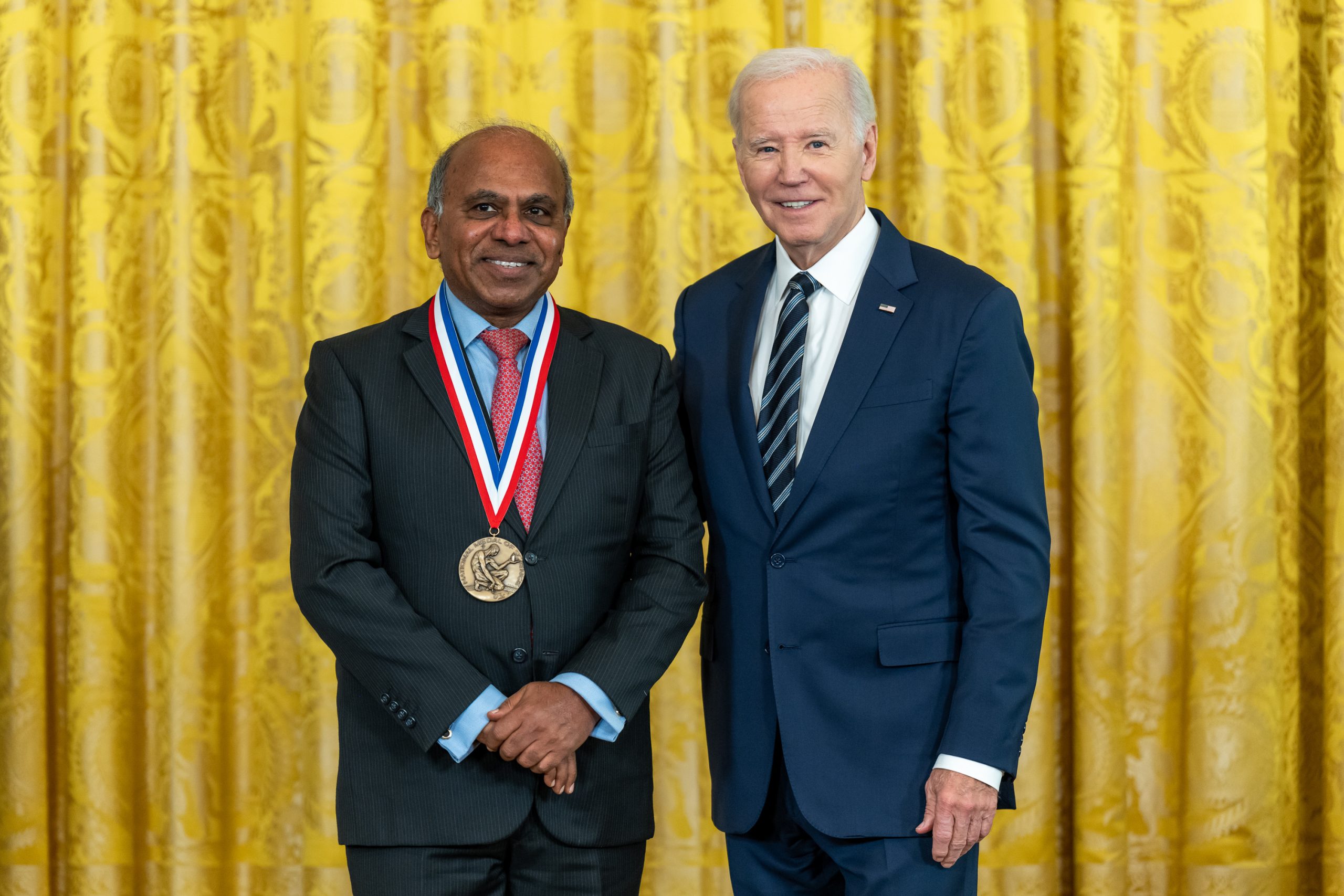
Prof Suresh with US President Joe Biden
According to the official statement by the White House, the scientist was honoured “for pioneering research across engineering, physical sciences, and life sciences. A transformative educator, he has advanced the study of material science and its application to other disciplines. His commitment to research and collaboration across borders has demonstrated how science can forge understanding and cooperation among people and nations.”
Prof Suresh’s research is centered on the characteristics of both engineered and biological materials, exploring their impact on human diseases and their applications across a wide range of industries. With a four-decade-long and illustrious career, the scientist boasts an impressive track record, with three published books, over 300 research articles, 35 filed patent applications, and the co-founding of two technology startups. He also founded the Global Research Council, an annual initiative designed to facilitate the connection and coordination of leaders from major research funding agencies worldwide.
A student par excellence
Born in 1953 to a Tamil family residing in Mumbai, Prof Suresh was always the brightest kid in his class. Focused and passionate, his classmates would often approach him to help them with their studies, and this academician never turned anyone down. In one of his early interviews, the scientist stated that he always knew he would be very good at teaching.
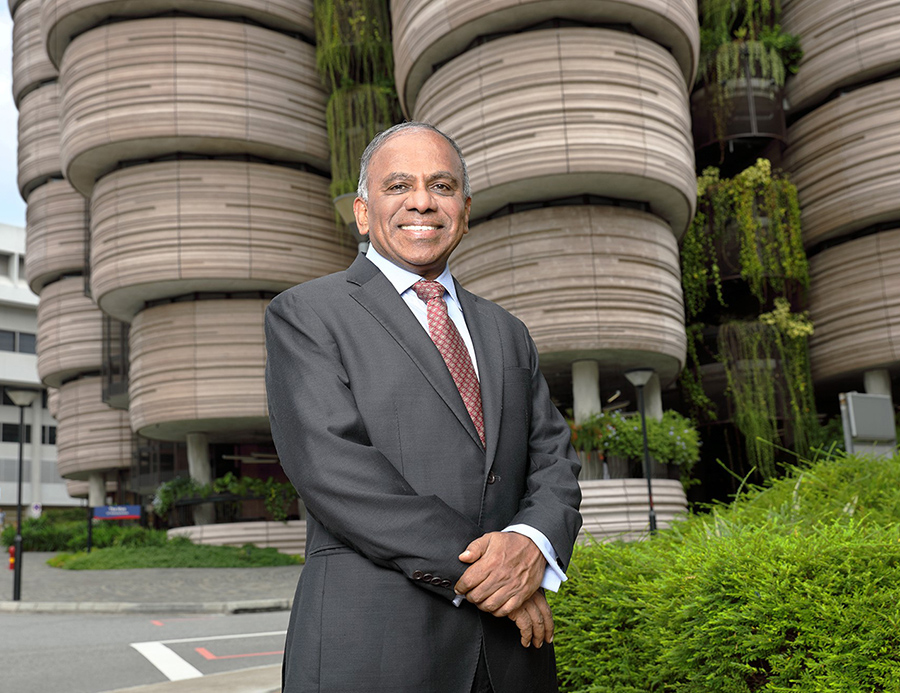
After finishing high school, while many of his friends were still thinking about what to do next, Prof Suresh’s goals were very clear. He cracked the IIT entrance examination, and after four years of hard work, received his BTech degree from IIT Madras graduating first class with distinction. The same year, in 1977, the scientist moved to the United States of America, where he received a Master’s degree in Mechanical Engineering from Iowa State University in 1979, and later earned a Ph.D. in Mechanical Engineering from Massachusetts Institute of Technology under the guidance of Robert O. Ritchie in 1981, specialising in materials science.
Awards and beyond
The young scientist was still pursuing his postdoctoral research at the University of California, Berkeley, and the Lawrence Berkeley National Laboratory when he received the prestigious Hardy Medal “for exceptional promise for a successful career in the broad field of metallurgy by a metallurgist under the age of 30”.
Soon after he received his Ph.D., the scientist went to work for the Ivy League institution, Brown University in 1983, where he served as an Assistant Professor of Engineering, and was eventually promoted to Associate Professor with tenure in July 1986 and Professor in July 1989. However, within a one-and-a-half year of joining Brown University, Prof Suresh was selected by the White House to receive the NSF Presidential Young Investigator Award.
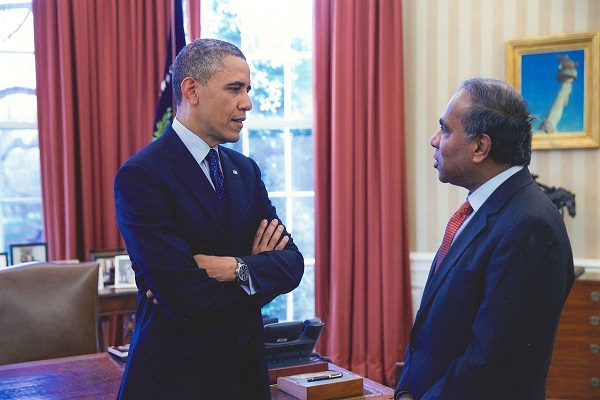
Prof Suresh with former President of USA, Barack Obama
Decorated with several medals and honours very early in his career, including the 1992 Ross Coffin Purdy Award from the American Ceramic Society, the scientist’s book, Fatigue of Materials (1991) has been cited more than 5,300 times in scholarly publications as per Google Scholar. The book has also been translated into Chinese and Japanese and adopted as both a textbook and a reference work.
But despite all his achievements, the scientist still shares a very close relationship with India. “I come to India quite often,” the Global Indian said, adding, “In large portions of Indian society, and this is historic, going back hundreds or thousands of years, there has always been a strong emphasis on education, knowledge, and scholarship, including science and engineering. The last 18 years in India have been very interesting, especially in areas like information technology, where India has emerged as a leading participant in the global scene. Science and engineering play a huge role in that. Also, the middle class in India has moved up quite a bit in the last 18 years. This is a very good illustration, in the context of a large country, a large population, and a large democracy, that education broadly in any field and science and engineering education, in particular, can be a ticket to prosperity. If that continues it will be a very good thing not just for India but for the whole world.”
A true guru
Having tasted the joys of teaching, the scientist moved to the Massachusetts Institute of Technology as the R.P. Simmons Professor of Materials Science and Engineering in 1993. There, Prof Suresh realised that teaching doesn’t just involve guiding students in the classroom, but also inspiring young talent to join institutions.
Realising the huge gender gap in the scientific world, the academician took it upon himself to motivate young girls to take up higher education in scientific fields. “In most countries, women occupy 50 percent of the population and hence 50 percent of the talent pool. In the US, about 70 percent of the top-ranking students in high school are girls, both in public and private schools, and they also do well in mathematics and science, and so forth. If they are not represented in engineering, then we are losing out on the top talent,” the scientist explained during an interview.
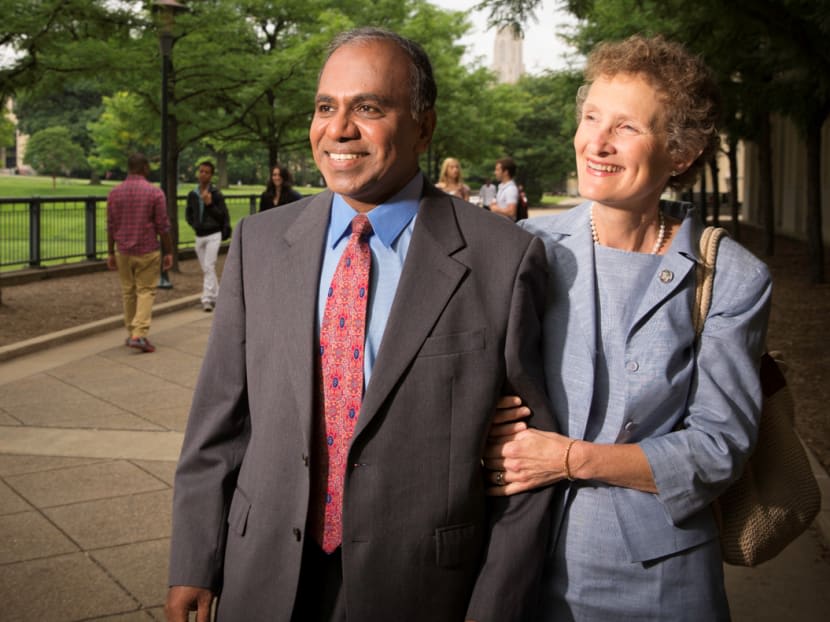
Professor Suresh with his wife, Mary Delmar Suresh
He added, “Women play such an important role in the 21st century, and we cannot have such small representation. So, I did some experiments at MIT, and we found that the key is not in admitting more women through quotas, but instead through something more sustainable in the long term. You need role models; you need professors for women who are good role models for students. Secondly, you have to do extra work to attract talent. When we admit students, they get offers from many different universities. I would offer to make personal calls and talk to students whom the departments felt would be a good fit for the university, and it worked. It worked for both genders, but it worked better for women. So, I think there are things we can do, scholarships are one way, and role models and mentoring are very important too.”
Heading the National Science Foundation
In 2010, U.S. President Barack Obama nominated Prof Suresh to be the Director of the National Science Foundation (NSF). At the institution, the scientist worked on investing in the best people, whose ideas could make a difference on the ground. “There are not many countries in the world where somebody who comes to get an education as a student has an opportunity to lead an agency like the NSF,” he said during an interview, adding, “I think this has been one of the remarkable things about the U.S. and as long as that possibility exists in the country one would hope that people would come here from all over the world.”
Looking at his successful profile, the Nanyang Technological University in Singapore appointed him as their President. Under his leadership, the University introduced a specific curriculum on innovations and digital technologies. During the COVID-19 pandemic in 2020, Prof Suresh and his wife made a personal gift of $100,000 to seed the NTU Priorities Fund, which has now grown to $8.9 million, in support of students with urgent financial needs. The scientist, who has trained several budding academicians and contributed heavily to the scientific world in the last four decades, is now looking forward to a peaceful retired life in Singapore after stepping down from his post later this year.


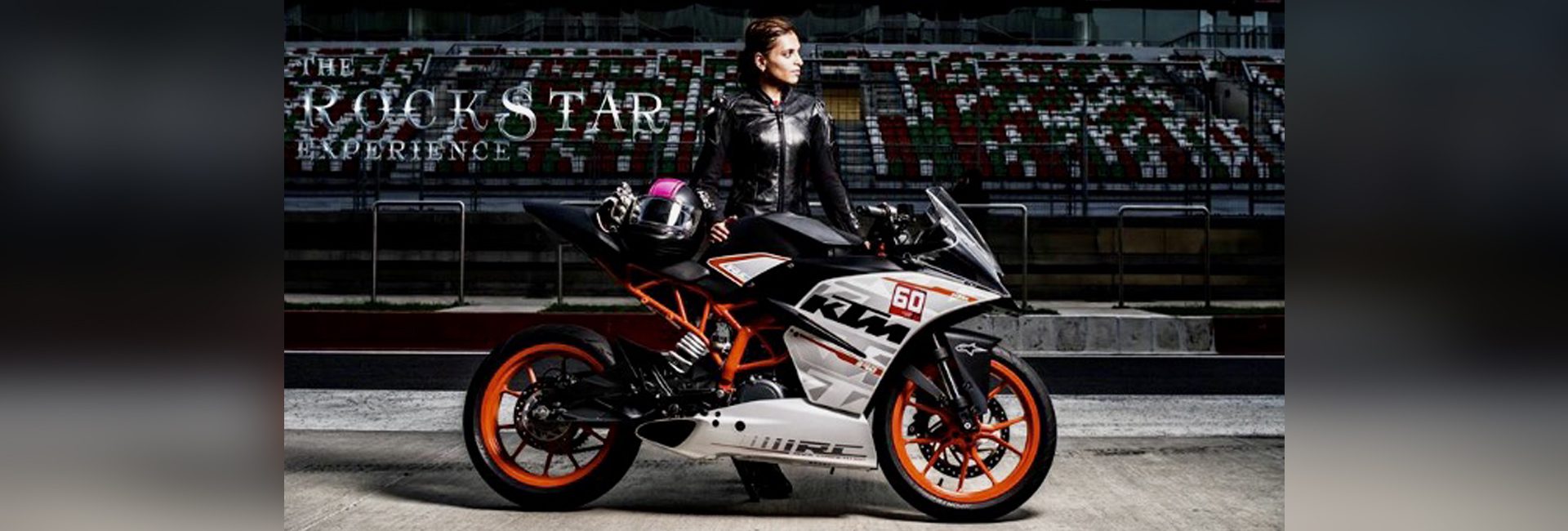
 Racing with glory[/caption]
Racing with glory[/caption] Dr Neharika Yadav at her clinic in Gurgaon[/caption]
Dr Neharika Yadav at her clinic in Gurgaon[/caption] The biker-doctor-model wears all hats with elan[/caption]
The biker-doctor-model wears all hats with elan[/caption]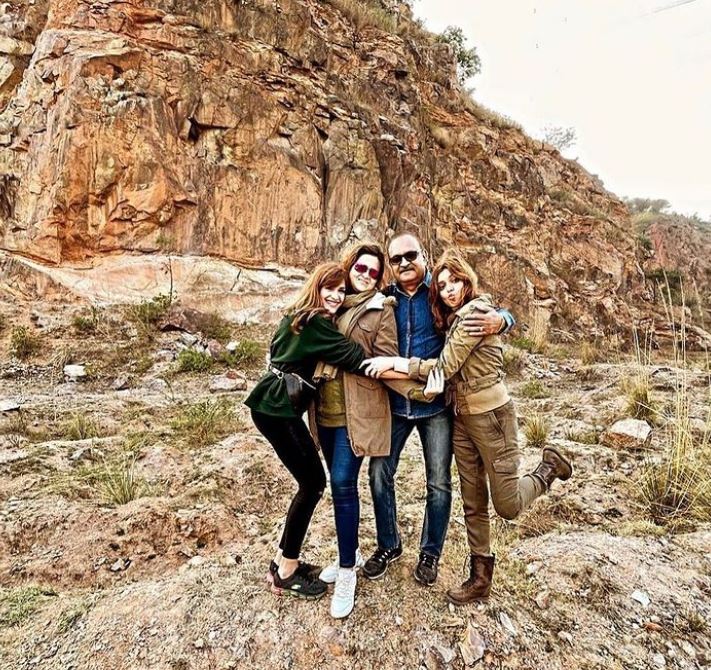 Dr Neharika Yadav with her parents and sibling[/caption]
Dr Neharika Yadav with her parents and sibling[/caption]

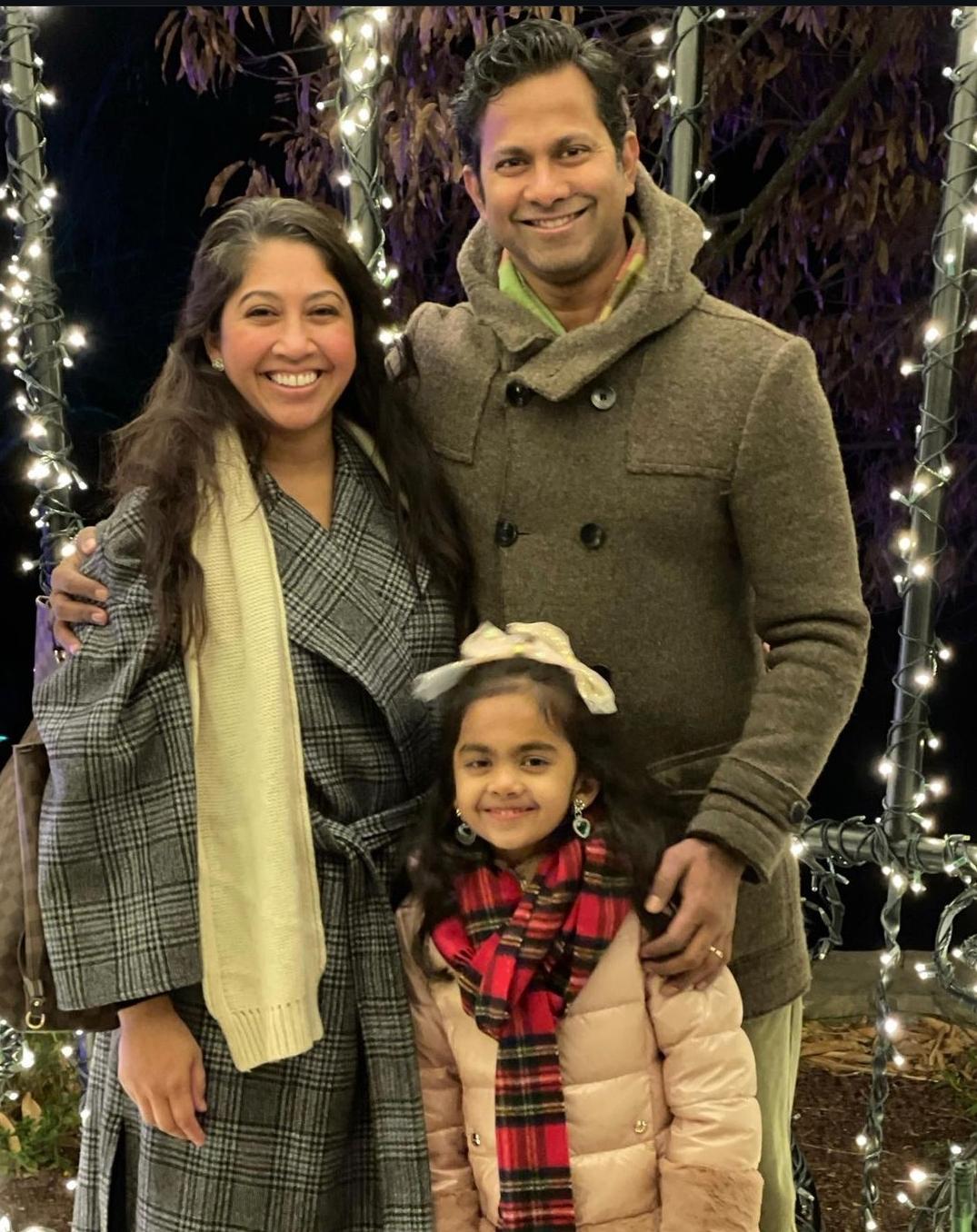 Balaji with his wife and daughter[/caption]
Balaji with his wife and daughter[/caption]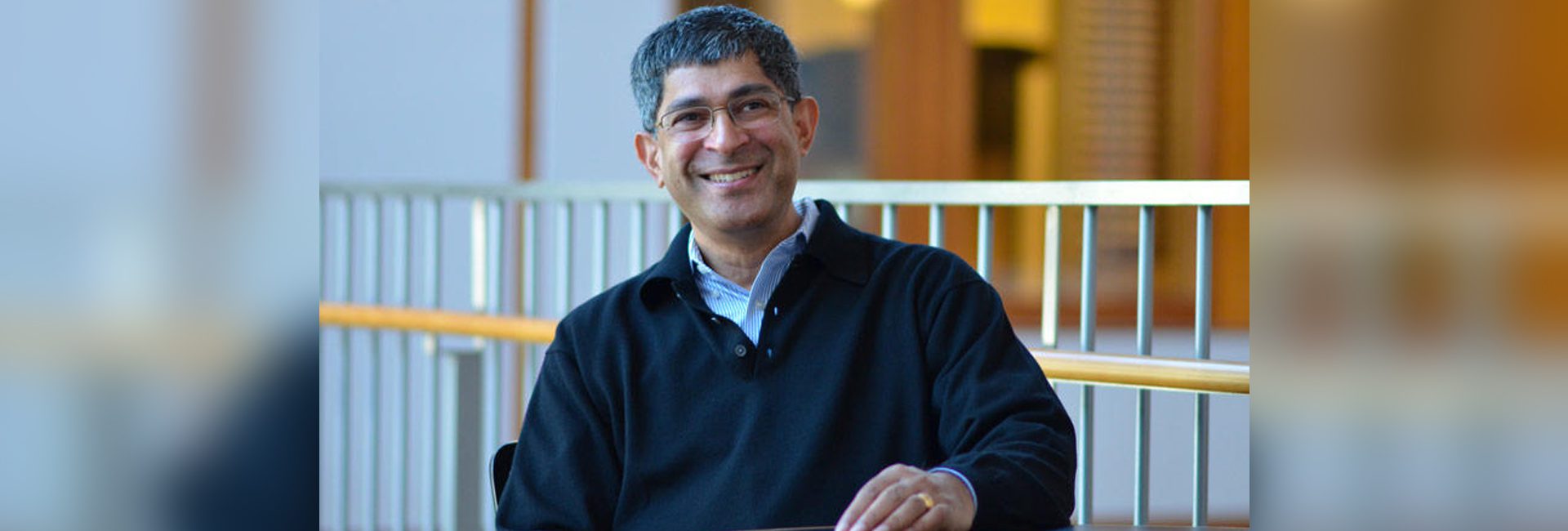
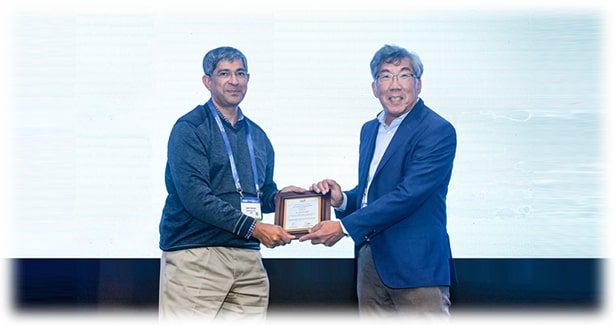 Prof John Kuriyan receiving SGRF Lifetime Achievement Award[/caption]
Prof John Kuriyan receiving SGRF Lifetime Achievement Award[/caption]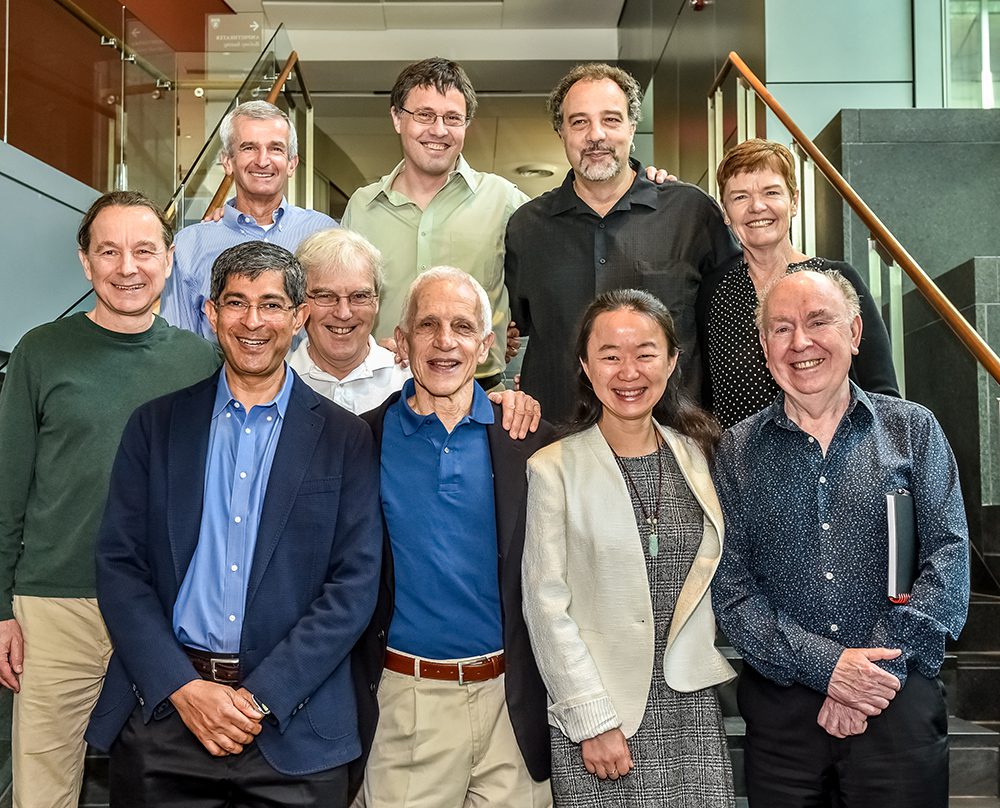 Prof John Kuriyan with world's leading structural biologists, at the Inaugural Symposium for the Harvard Cryo-Electron Microscopy Center for Structural Biology[/caption]
Prof John Kuriyan with world's leading structural biologists, at the Inaugural Symposium for the Harvard Cryo-Electron Microscopy Center for Structural Biology[/caption]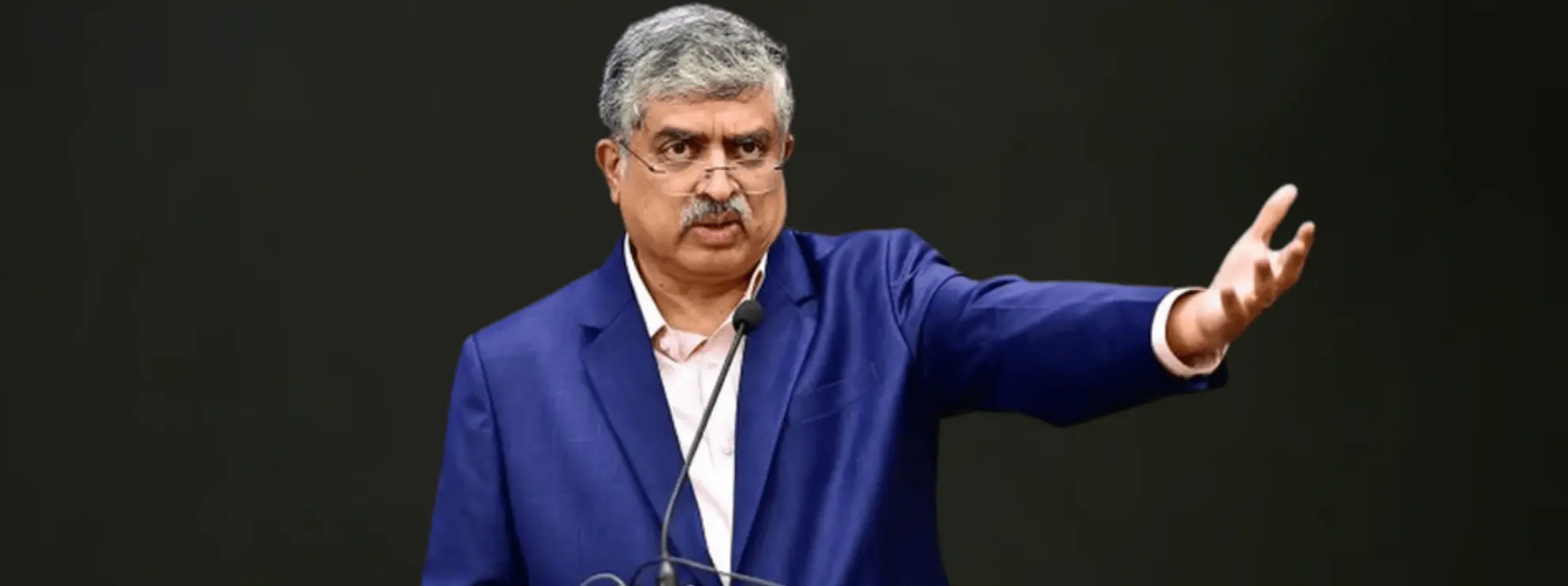
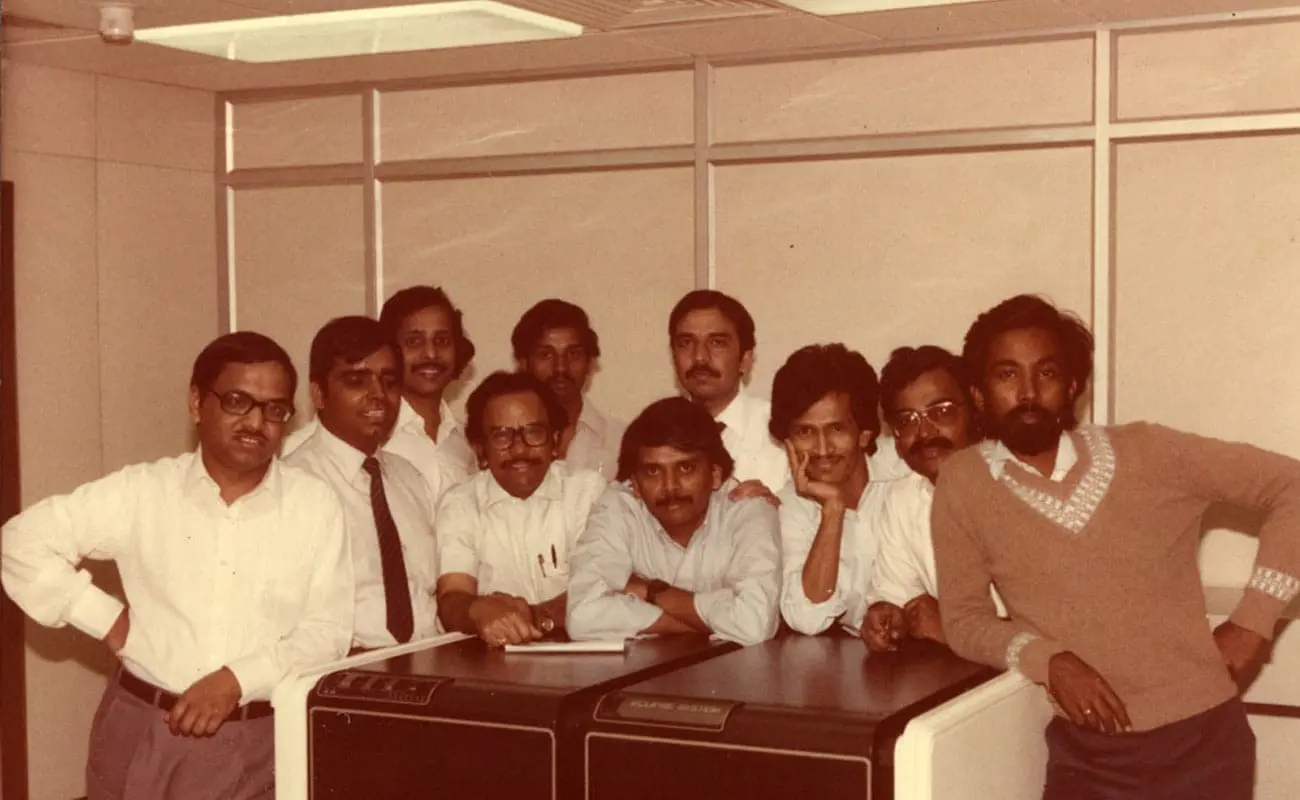 The co-founders of Infosys[/caption]
The co-founders of Infosys[/caption]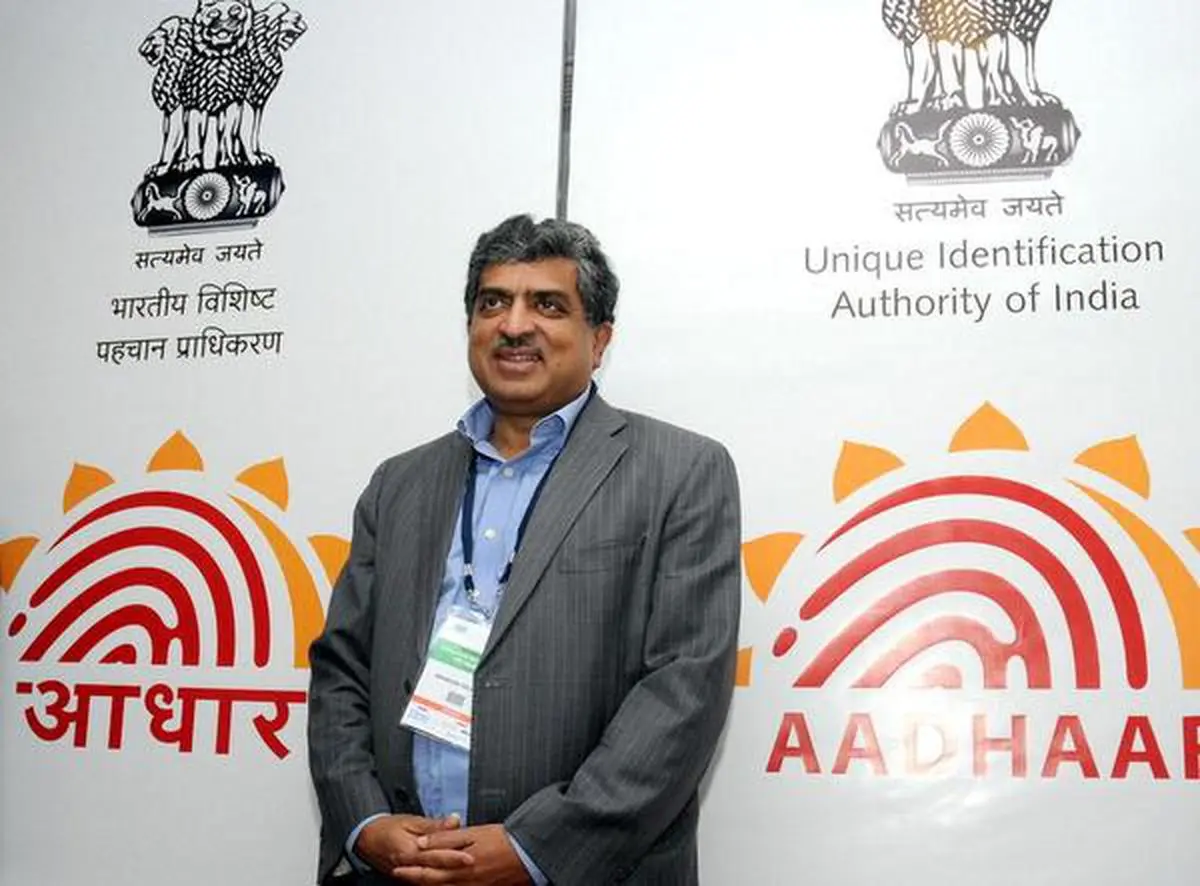
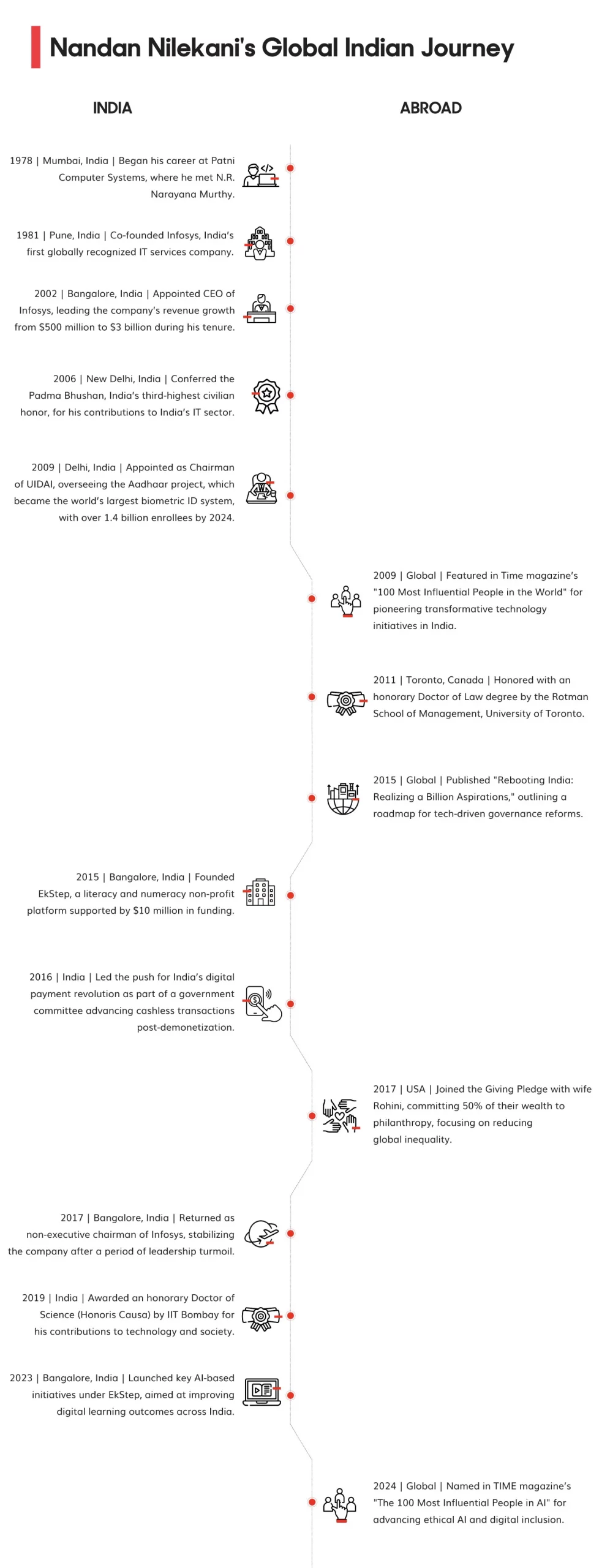
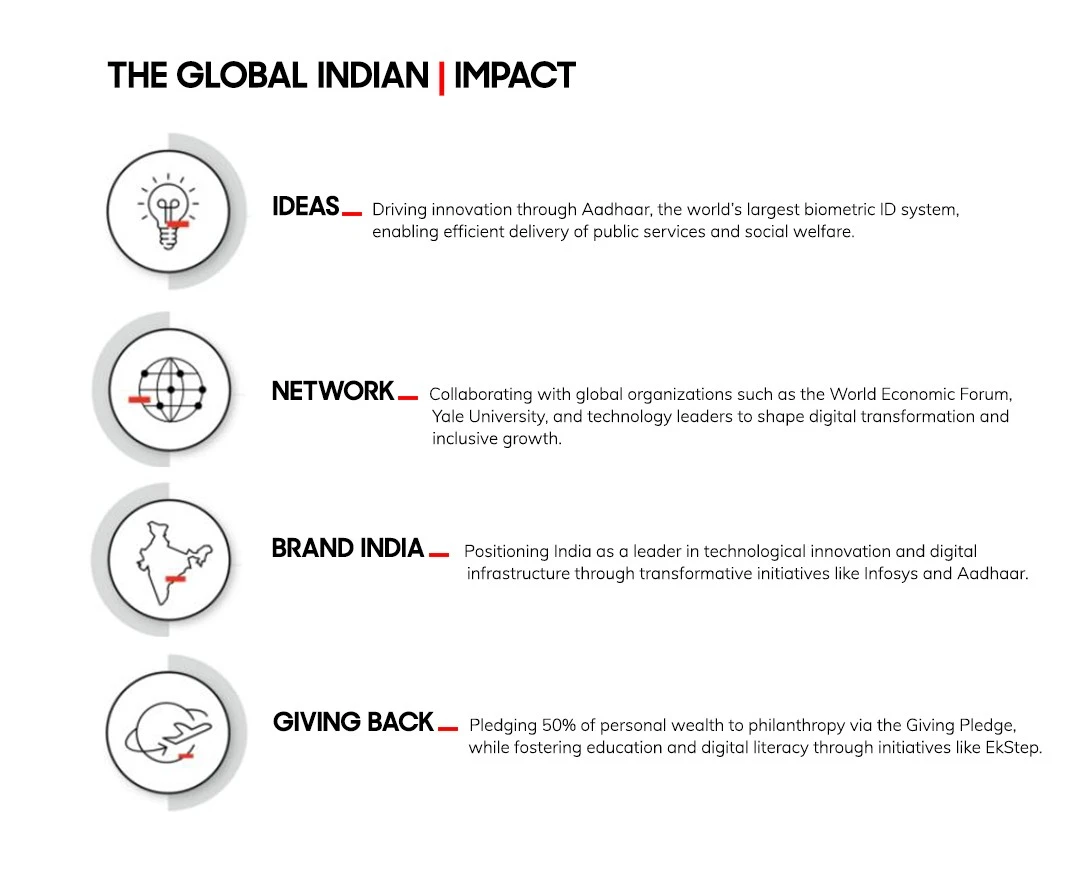

 Architect BV Doshi conducting a walkthrough at IIM Bangalore. Photo credit: IIM-B[/caption]
Architect BV Doshi conducting a walkthrough at IIM Bangalore. Photo credit: IIM-B[/caption]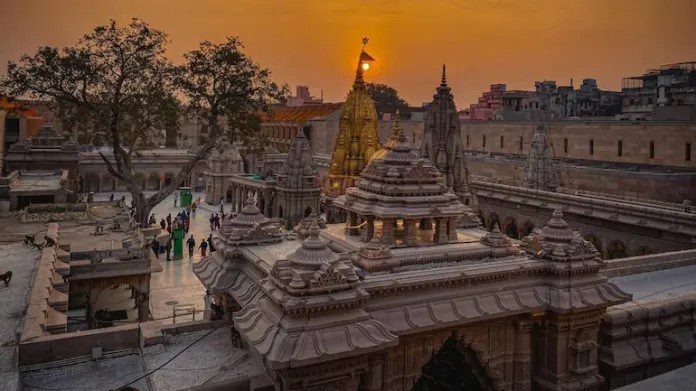 The Kashi Vishwanath Dham[/caption]
The Kashi Vishwanath Dham[/caption]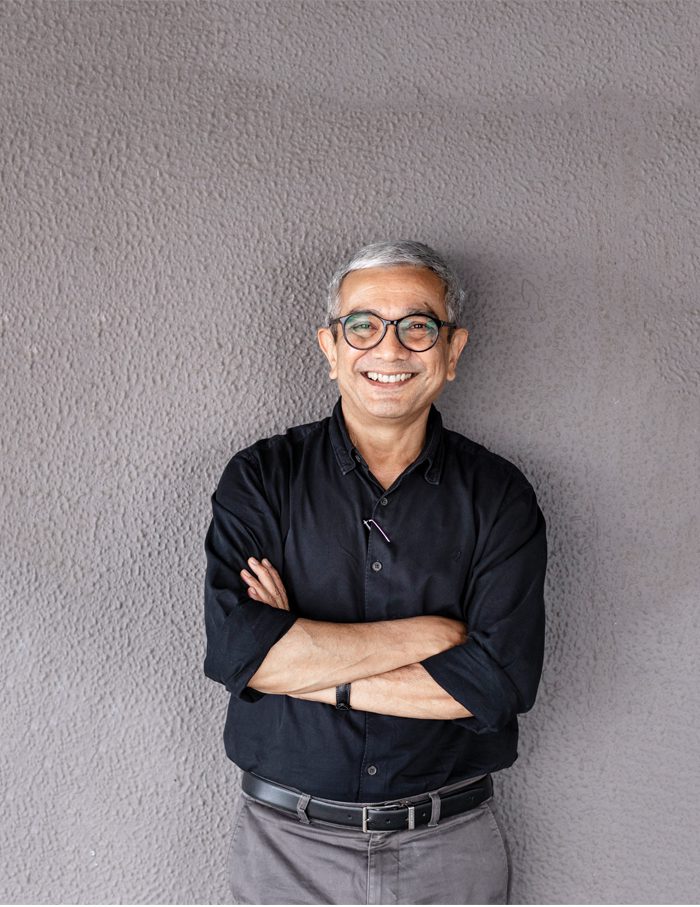 Bimal Patel. Photo credit: Umang Shah /
Bimal Patel. Photo credit: Umang Shah /  The Shirdi Sai Baba Mandir, Chennai (ongoing). Render courtesy:
The Shirdi Sai Baba Mandir, Chennai (ongoing). Render courtesy: 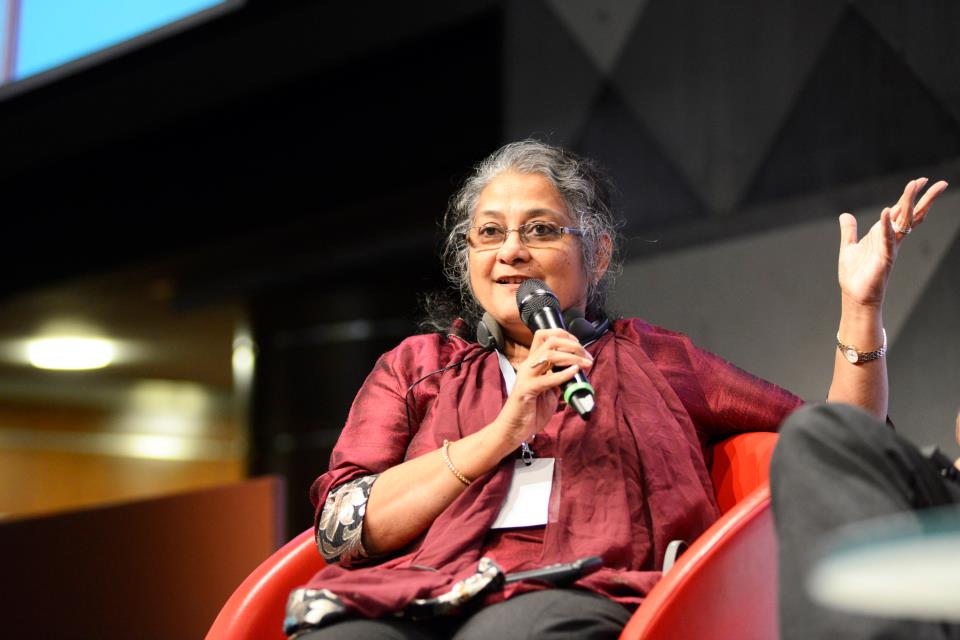 Sheila Prakash[/caption]
Sheila Prakash[/caption] Infosys Nagpur Campus. Image- worldarchitecture.org[/caption]
Infosys Nagpur Campus. Image- worldarchitecture.org[/caption]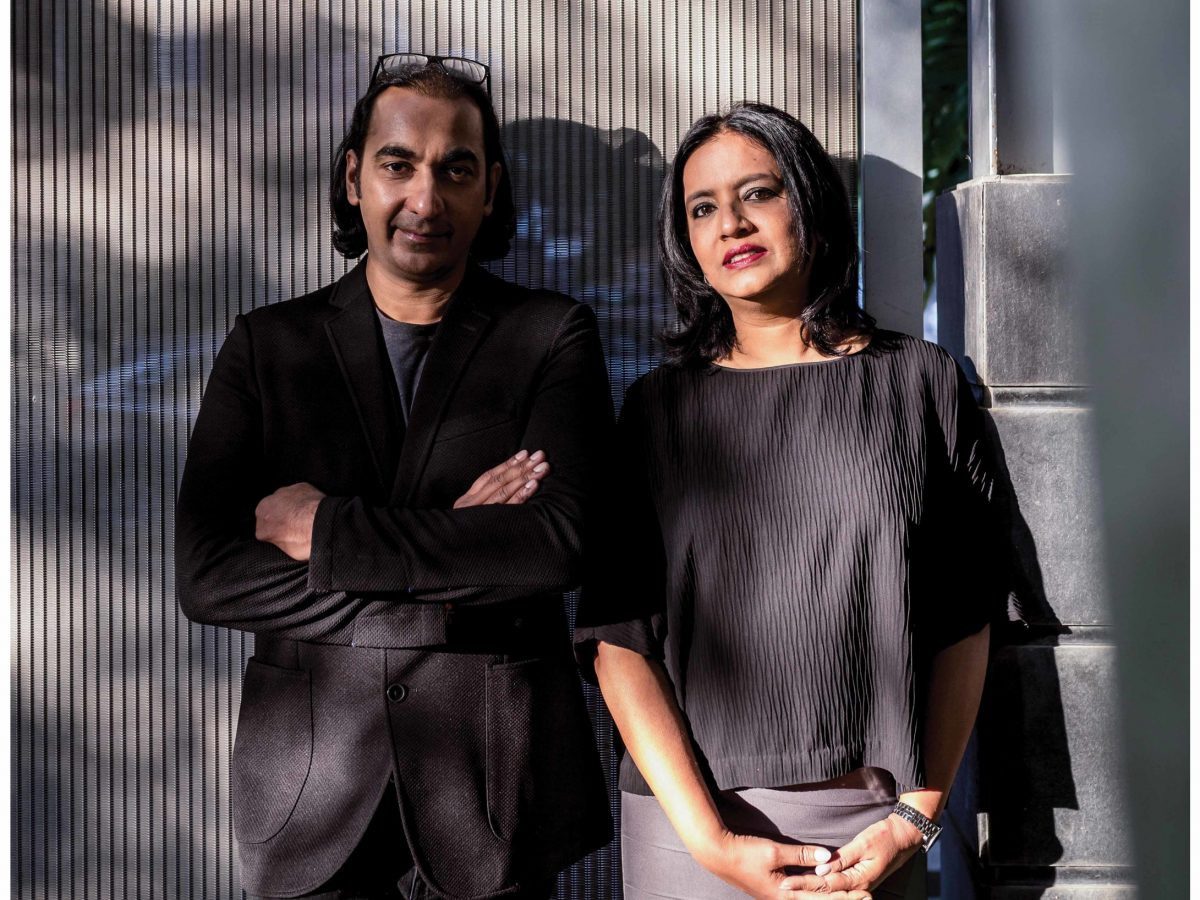 Sonali and Manit Rastogi[/caption]
Sonali and Manit Rastogi[/caption]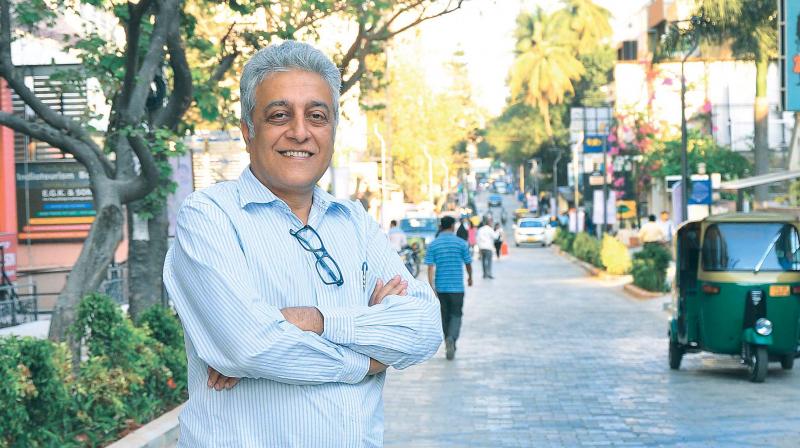 Naresh Narasimhan on Church Street. Photo:
Naresh Narasimhan on Church Street. Photo:  Rahul Mehrotra. Photo
Rahul Mehrotra. Photo